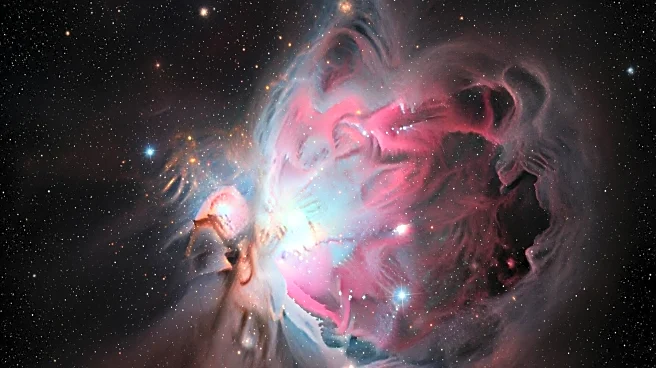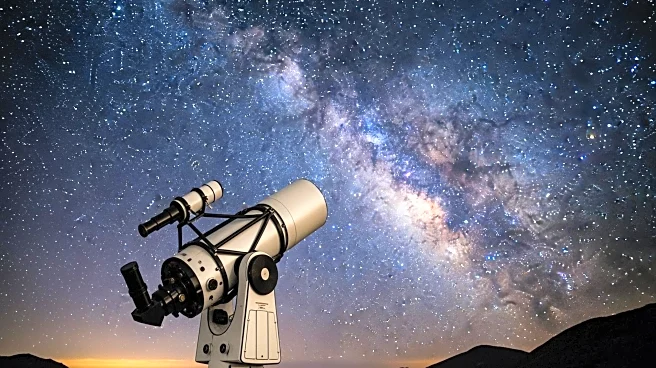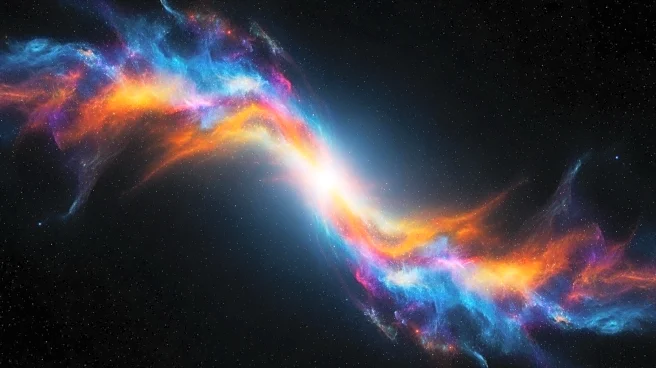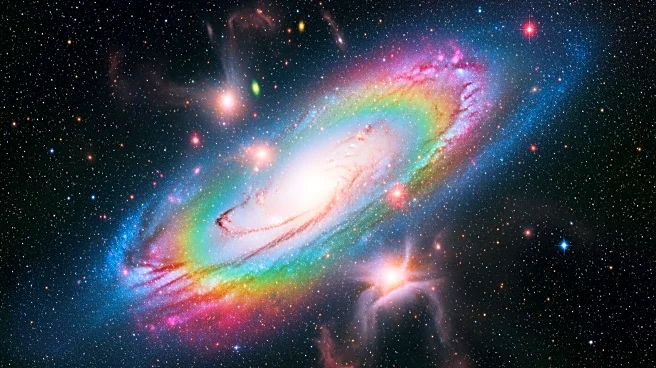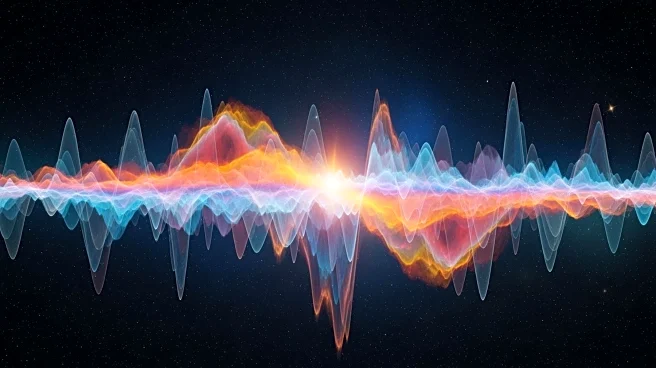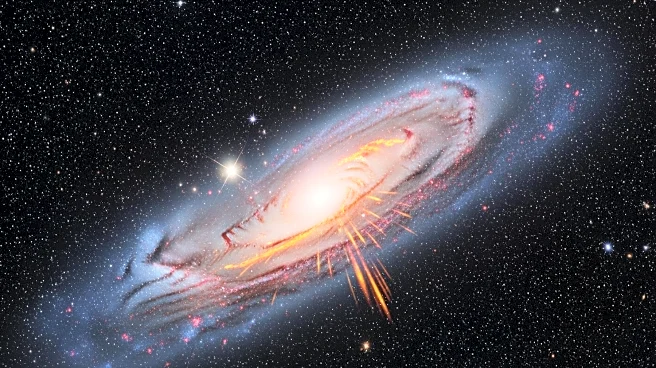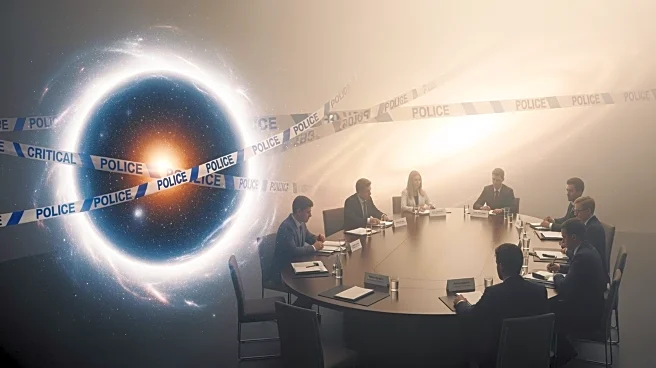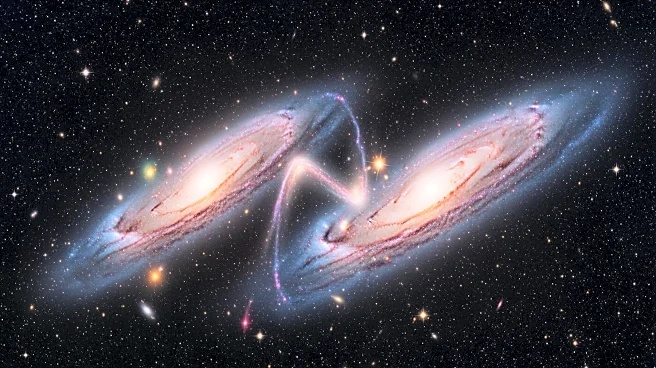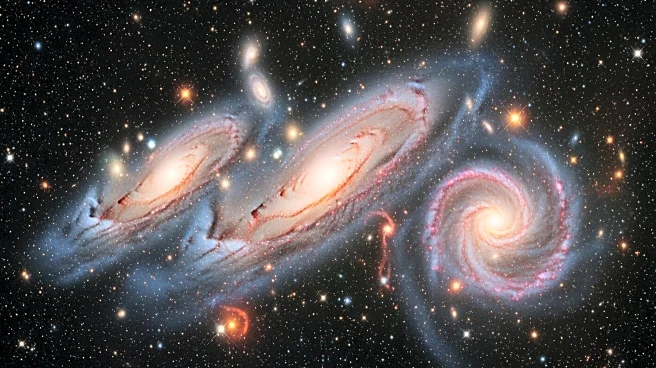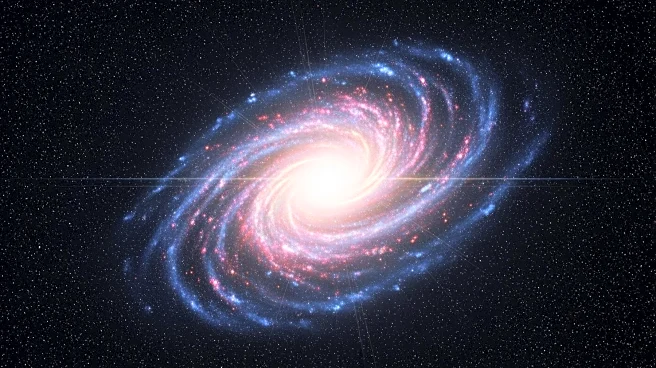What's Happening?
An international team of astronomers has successfully mapped CO-dark molecular gas in the Cygnus X region, a significant star-forming area in the Milky Way. Using the Green Bank Telescope, the researchers
have created the first large-scale maps of this previously invisible form of matter. CO-dark molecular gas does not emit light detectable by most telescopes, making it a blind spot in astronomy. Traditionally, astronomers have identified star-forming regions by detecting carbon monoxide (CO), but this method misses a substantial amount of star-forming gas. The new maps, covering an area over 100 times the size of the full moon, reveal a complex network of gas structures, including arcs, ridges, and webs, which are crucial for star formation.
Why It's Important?
This discovery is significant as it provides new insights into the processes of star formation in the Milky Way. By mapping CO-dark molecular gas, astronomers can better understand how stars are born from molecular hydrogen clouds. The findings highlight the dynamic nature of these gas flows, which move at higher velocities than previously thought, influencing the rate of star formation. The research also underscores the role of starlight radiation in shaping these processes. This advancement in mapping techniques allows scientists to track the transformation of simple atoms into complex molecular structures, potentially leading to the formation of stars, planets, and life.
What's Next?
The Green Bank Telescope will continue to be a vital tool for further research, with larger surveys of Carbon Radio Recombination Lines (CRRLs) planned to explore other star-forming regions in the Milky Way. These efforts aim to enhance the understanding of galactic recycling and the formation of massive star-forming clouds. The insights gained from this research will aid astronomers worldwide in modeling the processes that govern star formation in our galaxy and beyond.
Beyond the Headlines
The mapping of CO-dark molecular gas opens new avenues for exploring the unseen forces in the galaxy. By making the invisible visible, astronomers can now track the raw material's journey from simple atoms to complex molecular structures. This research not only advances the understanding of star formation but also contributes to the broader knowledge of galactic evolution and the potential for life elsewhere in the universe.
